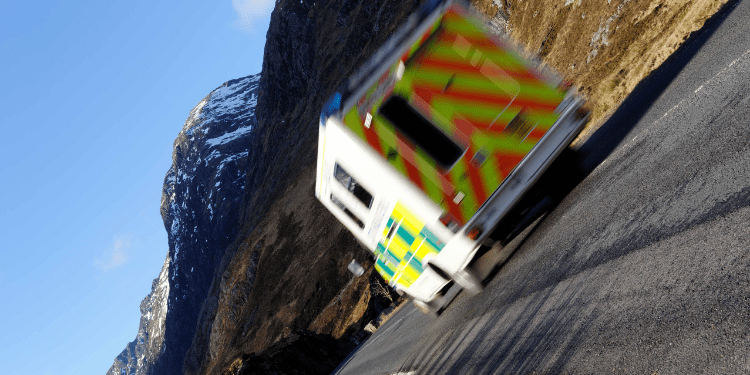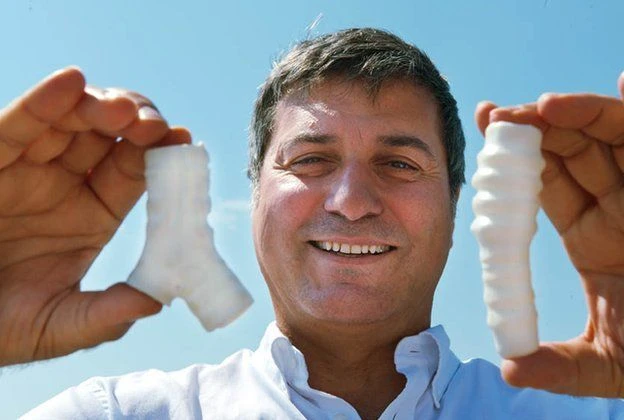
A report commissioned by the University of Central Lancashire’s (UCLan) National Centre for Remote and Rural Medicine has revealed the health inequalities experienced by people in the UK’s rural areas.
The research, published in a new report, analyses the unique health problems prominent in remote parts of the UK.
It spans the country, pulling results from all corners of the UK including Jaywick in Essex, Blackpool in Lancashire and up to Copeland in Cumbria, and outlines the measures that are needed to tackle the problem head-on.In collaboration with local government, educators, industry and politicians, the paper makes the case for a focus on improving health in remote and rural areas. By contrasting coastal towns with market towns and their hinterlands, the paper gives a measure of how far we have to go to ‘level up’ local communities.
For the research, the team analysed a number of available indicators including life expectancy, cancer survival, admissions and readmissions to understand more about health inequalities and the healthcare system in rural areas.
Diseases of despair
Researchers found that rural areas are disproportionately affected by ‘diseases of despair’. In County Durham in the North East, the rate for alcohol-related-harm hospital admissions was 758 per 100,000 population – significantly worse than the average of 664 per 100,000 for England.This represents 3,972 admissions to hospital per year. The rate for self-harm hospital admissions is 197 per 100,000 population, representing 1005 admissions per year.
Meanwhile, it also found that rural health technology was developing at a slower pace than that in towns and cities, leaving its inhabitants geographically isolated and lonely. While much has been done to improve UK-wide connectivity, rural communities still face problems.
According to the UK’s communications regulator Ofcom, 234,000 people in rural England are unable to receive decent broadband from a fixed line. Meanwhile, large rural areas in the north of England and in the southwest are unable to get outdoor 4G coverage.
Further problems were exposed when the researchers looked at the demographic make-up of rural and coastal populations, which were found to be aging twice as fast as the UK average.
The proportion of residents over 65 in Richmondshire District Council in North Yorkshire rose from 15% in 2001 to 21% in 2018, according to research from the Resolution Foundation published in October 2019. The average age in North Norfolk is 53.8 years, the oldest average of any local authority.
Worst health outcomes
The worst health outcomes were found in the UK’s seaside towns in terms of mental health problems, more homeless people and more alcohol and drugs problems.
Dr Vincent Argent, Consultant in Rural Emergency Medicine at Dorset Rural County Hospital, says access to health services intensifies the problem:
“Our health services often have poor access because, of course, they’ve got the sea on one side of them. They don’t have 360-degree catchment and, quite often, the roads to seaside towns are not very good – there aren’t any seaside towns that have a motorway coming into the centre of town. Places like Hastings and Rhyl are quite difficult to get out of. People often don’t have jobs, so they don’t have cars, and the public transport is inadequate.”
Added to this is the challenge of recruitment. Rural hospitals were found to be struggling to find consultants to fill their vacancies across the country, with some hospitals not able to fill a single vacancy in a year.
A recruitment crisis amongst senior clinicians was revealed in research by the Royal College of Physicians published in October 2019, showing that just 13% of consultants appointed in England last year went to hospitals serving mainly rural or coastal areas, with the other 87% being hired by those with mainly urban populations.
Areas most affected by health inequalities
While rural Clinical Commissioning Groups (CCGs) have better or similar outcomes to urban ones, likely due to being generally more affluent, huge health inequalities remained in many areas. A spotlight was shone on Cumbria, a region with striking inequalities and diverse geographies.
To the east and south of the county, including the Eden Valley and Appleby-in-Westmorland, communities are generally affluent and life expectancy is long. However, to the west, there are small towns all along the coast with significant deprivation.
In the borough of Copeland, for example, the rate of alcohol-related admissions is 774 per 100,000 population – worse than the average for England. The rate of alcohol-related admissions in South Lakeland is better than the average for England – 539 per 100,000 population.
Similar differences can be seen across child health and life expectancy not just between those two boroughs but also between Eden and Barrow-in-Furness. The rate of child obesity among children aged 10-11 in Eden is 16.2% compared to 25.5% in Barrow-in-Furness.
Life expectancy in Eden is 82.0 years, while life expectancy in Barrow-in-Furness is only 77.1 years. This highlights the existence of pockets that often get overlooked when it comes to rural medicine, indicating that a more unique approach to rural healthcare is needed.
The report identified five solutions for achieving an equitable health service for everyone:
- Better training for rural clinicians
- More training for pharmacists and professions allied to medicine
- Connectivity in rural areas to reduce isolation and accelerate the uptake of digital health solutions
- Accelerate digital uptake and training on digital health skills for clinical workforce
- Solve the recruitment crisis in rural areas by incentivising clinicians to take rural jobs
Professor Catherine Jackson, Executive Dean, Faculty of Clinical & Biomedical Sciences and Head of the School of Medicine at UCLan, said:
“Because doctors now specialise at a much earlier stage than they used to, both primary-care and secondary-care doctors feel uncomfortable in a remote and rural setting. Primary-care doctors of my generation who went to work in remote and rural locations had usually all done something else beforehand – they’d been a surgeon or an anaesthetist or, as in my case, a physician – so they brought additional experience. Because of the training routes for doctors that increasingly doesn’t happen anymore.“At UCLan, we’ve created a number of courses specifically designed to train remote and rural practitioners, basically wherever help isn’t coming very quickly. They could be working here in the UK or on oil platforms or in the middle of the desert or in an aeroplane. It’s to provide people the skills and competencies and confidence to practice, so they feel able to go and work in these places – to be able to practice safely and to provide a very good standard of care. If we want to successfully level up these regions, we need to be able to offer a first-class service, but it has to be delivered differently in order to address the specific challenges.”







